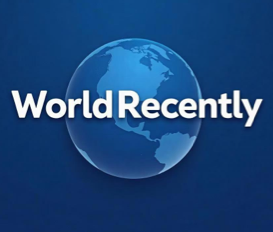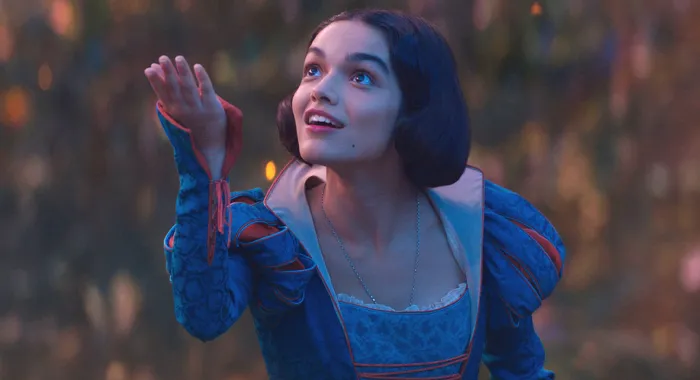Since its March 21 release, Disney’s live-action Snow White (2025) has been mired in both box office and word-of-mouth woes. The $240 million to $270 million remake attempts to revive the 1937 animated classic through modernization, but due to controversial changes and narrative imbalance, it has become a “trial and error sample” of Disney’s remake strategy. The following analysis is based on three dimensions: core controversies, market performance and industry impact.
—
The following is an analysis of the three dimensions of the core controversial points, market performance and industry impact.
I. Subversive Adaptation: The Conflict between Political Correctness and Classic Narrative
Director Marc Webb’s version of the film is a radical adaptation of the original story. Snow White (Rachel Zeigler) is portrayed as the “leader of the jungle”, wielding a sword against the powerful evil queen played by Gal Gadot. The character of Prince Charming was removed and replaced by the commoner love interest Jonathan, and the seven dwarfs were replaced with a diverse cast of CGI magical creatures.
Controversial Focus:
- Casting and Identity Politics: The casting of Latino actor Zeigler sparked a debate between “traditional images” and “diverse representations”. Although Disney emphasized the need to modernize the character, some viewers felt that it was an excessive deconstruction of a classic IP.
- Dwarf controversy escalated: The CGI magical creatures were not only criticized for being “depersonalized”, but were also the subject of dwarfism rights. Actor Pete Dinlage has publicly questioned Disney’s handling of the dwarf character, calling it “regressive and hypocritical”.
- Dissolution of classic symbols The removal of the glass coffin scene and the adaptation of Someday My Prince Will Come were seen by traditionalist audiences as a departure from the spirit of the original film.
Attempts and Failures to Balance: despite the film’s attempts to appeal to a younger audience through a female empowerment narrative (e.g., Snow White’s portrayal of a leader), it fails to build emotional resonance due to the script’s plodding pacing and weak character motivations.
II Box Office Waterloo: Signs of a Failure of the Remake Formula
The box office results of $16 million on the first day and $45 million in the first week’s estimate are dismal compared to the $78 million performance of The Lion King (2019) on the first day. Analyze the reasons for its failure:
- Audience fatigue: Since the successive failures of Dumbo (2019) and Pinocchio (2022), Disney’s formula of “classic remake + political correctness” has become tired. Audience resistance to the “assembly line adaptation” has created a #NotMySnowWhite conversation on social media.
- Cost vs. Return Imbalance: The movie needs to gross $600 million worldwide to pay for itself, but current projections show that it will end up grossing $350 million, making it one of Disney’s most expensive failures in recent years.
- Promotion and Distribution Strategy Mistake: The low-profile operation of canceling red carpet premieres and curtailing media interviews was interpreted as a lack of confidence on the part of the film’s producers, which further weakened the market’s expectations.
Contrasting Case: The live-action Mulan (2020), which also features a female lead, has sparked controversy over its streaming strategy, but its $350 million global box office (during the epidemic) still shows resilience, countering Snow White’s misaligned positioning.
III. Industry Takeaways: Crossroads for Disney’s Remake Model
The debacle of “Snow White” exposed the structural crisis of Disney’s remake universe:
- Imbalance between innovation and nostalgia: the movie not only wants to attract new generations through the “awakening narrative”, but also relies on the emotional dividends of classic IP, resulting in narrative fragmentation. Critics have pointed out that this “two-pronged” strategy is already evident in The Little Mermaid (2023).
- Inflated Costs and Lack of Creativity: A large amount of the $270 million budget was spent on CGI effects (e.g., magical creatures and forest scenes), which failed to translate into a distinctive visual style. In contrast, Beauty and the Beast (2017) generated $1.26 billion at the box office for a cost of $160 million, proving the viability of moderate innovation and classic restoration.
- The Double-Edged Sword of Streaming: despite Disney+’s plans to launch the film in June 2025, streaming figures will struggle to make up for theater losses. What’s worse, audiences are less tolerant of “compromised for streaming” movies.
Future Adjustments: According to internal sources, Disney has suspended three remakes in the pipeline and is re-evaluating the direction of IPs such as Pinocchio and The Sword in the Stone. Meanwhile, the box office performance of the live-action “Star Baby” (2025) will be a key weathervane.
Conclusion: Where are the boundaries of fairy tale adaptations?
The Snow White controversy essentially epitomizes Hollywood’s “modernization of the classics” proposition. When political correctness becomes a creative shackle, when innovation is reduced to a formulaic adaptation, the audience’s choice has given the answer. If Disney wants to regain trust, perhaps it needs to return to the most simple narrative truth: in respect for the soul of the original on the basis of sincerity rather than calculations to impress the people. After all, the charm of the fairy tale never lies in the pile of special effects, but in the pure beauty of the eternal faith.


